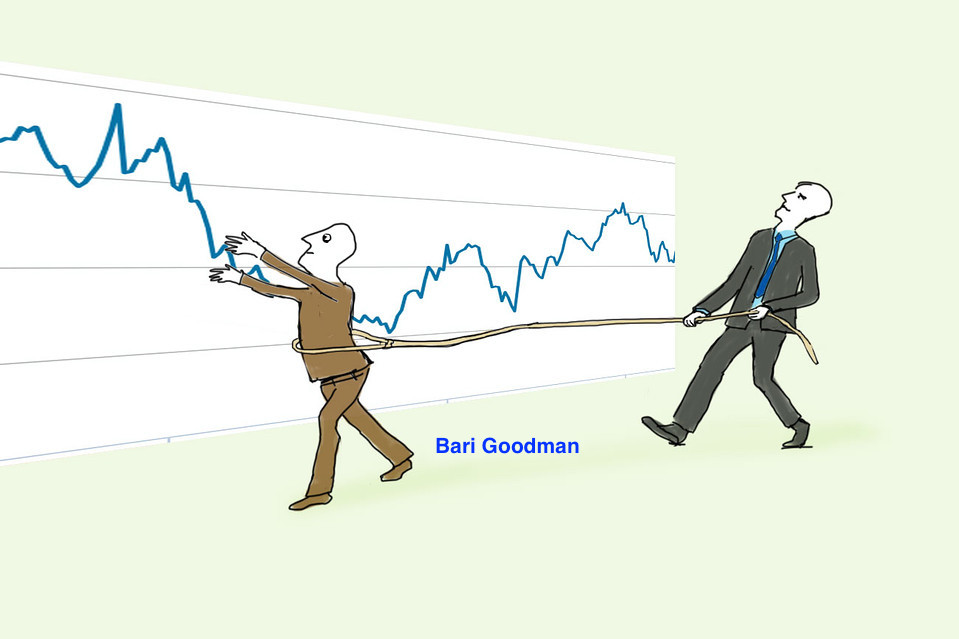A not-so-funny thing happened over the holidays. I was kicking around the Street, trying to understand the many ways financial advisers can deliver exceptional value to their clients.
What I uncovered was a cautionary tale about the next bear market. Why this one, whenever it comes, will test traditional wealth managers to the full extent of their professional capabilities.
That’s the scary part. I’ll start with the ironic. One of the most articulate, well-reasoned statements about an adviser’s worth comes from an organization whose core business model puts intense pressure on wealth managers:
Vanguard.
Last year, the company published a research article entitled “Putting a value on your value: Quantifying Vanguard Advisor’s Alpha.” The authors concluded traditional wealth managers can increase portfolio returns for typical investors by as much as 3%. With a bit of additional knowledge and know-how gleaned from SoFi’s investing 101 center, investors might make smarter decisions with their money and potentially even raise their returns.
Say you’re charging clients 80 basis points to manage their money. Your potential value-add is 2.2% per annum. That’s a huge increment over a 20-year period when your expertise generates real money through the power of compounding.
Vanguard’s attempt to quantify “adviser alpha” is bold, radical-in part because our industry often defines value in experiential terms. And why not? There’s nothing like jargon-free simplicity.
“Financial advisers add value by managing the cash flows of their clients,” says Mark Connolly, founder of New Castle Investment Advisors. Clear and to the point. As former director of New Hampshire’s Bureau of Securities Regulation, he brings a special gravitas to his observations.
But that said, the beauty of Vanguard’s research is its precision. The authors calculated their 3% number by classifying adviser value according to seven categories ranging from “asset allocation” to “behavioral coaching” to “total-return versus income investing.”
Then they estimated the potential adviser impact for each. Recommending cost-effective funds, for example, can add approximately 45 basis points to the portfolio returns of clients.
I was most interested in “behavioral coaching,” which equals 150 basis points of potential alpha according to Vanguard. That’s because advisers can serve as emotional circuit breakers, “circumventing clients’ tendencies to chase returns or run for cover in emotionally charged markets.”
The authors say a single client intervention can “more than offset years of advisory fees.”
That’s a nice endorsement from an organization, built on investment funds with management costs that are often less than 10 basis points.
But client interventions during bear markets are easier said than done. Remember 2008-2009? Sometimes it’s impossible to rein back emotions and prevent panic selling.
It was here–in my discussion with Francis Kinniry, one of the authors from Vanguard–that I tripped across the cautionary tale. Mr. Kinniry says the next downturn has the potential to be a “different kind of bear market.”
Investors now hold equities at “near peak” levels, he explains, while bond allocations are likely to offer less downside protection because investors are favoring yield over credit quality. Consequently, balanced portfolios will suffer losses that rival more severe bear markets even if equities don’t fall 38.5% as they did during 2008.
“The role of bonds is not to squeak out yield,” says Mr. Kinniry. “It’s to offset equity risk.”
What are “near peak” equities?
Investors have 61% of their assets in stocks, according to Mr. Kinniry. This number is alarmingly close to that of summer 2007, when equity allocations were 63.1%. The median allocation to that asset class since 1993 has only been 52%.
To continue reading, click on the Wall Street Journal.


 The New York Times describes my novels as “money porn,” “a red-hot franchise,” and “glittery thrillers about fiscal malfeasance.” Through fiction I explore the dark side of money and the motivations of those who have it, want more, and will steamroll anybody who gets in their way.
The New York Times describes my novels as “money porn,” “a red-hot franchise,” and “glittery thrillers about fiscal malfeasance.” Through fiction I explore the dark side of money and the motivations of those who have it, want more, and will steamroll anybody who gets in their way.